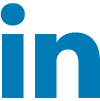Jordan DeFazio
June 03, 2025
Money Education Financial literacy Lifestyle Weekly updateIs a Mortgage-Free Retirement Still Possible in 2025?
For decades, a mortgage-free retirement was the gold standard in Canadian financial planning.
However, a recent Royal LePage report shows that 30% of retired Canadians are still carrying mortgage debt in 2025.
Why?
Rising home prices and shifting family responsibilities have reshaped the traditional path to retirement.
For some, debt was taken on later in life to help adult children afford their first homes. For others, refinancing during low-interest periods seemed smart at the time, but higher living costs and renewed rates are now squeezing fixed retirement incomes.
Why carrying debt into retirement changes everything
Debt limits flexibility because it reduces your ability to manage emergencies, adapt to inflation, or enjoy the lifestyle you may have envisioned. It can also impact your eligibility for government benefits or reduce your ability to withdraw efficiently from registered plans.
Some retirees opt to keep a mortgage strategically, especially if their rate is low and their assets are invested.
But without a clear plan, that choice can quickly become a risk.
What can you do if you’re nearing retirement and still have mortgage debt?
At the Popowich Karmali Advisory Group (PKAG), we work with many clients in their 50s and early 60s facing this exact challenge. The key is to treat debt as part of your broader retirement plan which looks different for everyone depending on their income, assets, and goals.
Here are four ways to get ahead of it:
- Assess your current debt: Not all debt is equal. Know your interest rate, terms, and how your mortgage fits into your monthly budget.
- Plan for rising costs: Rates can fluctuate from inflation or central bank decisions. Build a buffer so your finances can absorb higher payments at renewal.
- Explore the “four-bucket strategy: At PKAG, we use a diversified cash flow strategy to create flexibility. That means separating your money into short-term income, mid-term needs, long-term growth, and contingency so a mortgage payment doesn’t throw off your entire plan.
- Align your debt with your goals: You may want to downsize, keep your home, or even turn it into income property, but whatever your vision, your debt and lifestyle strategy should be aligned with it.
A mortgage isn’t a deal breaker but a conversation starter
Retiring with a mortgage means your strategy needs to evolve. What matters most is having a plan that accounts for today’s realities and supports the retirement you still want to have.
At PKAG, we help design plans that balance income, taxes, housing, and lifestyle goals - even when the mortgage isn’t fully paid off.
Wondering how to create a retirement plan that works with debt?
Join us for our next in-person seminar and learn how we help Albertans retire with clarity, confidence, and control.
Sources:




